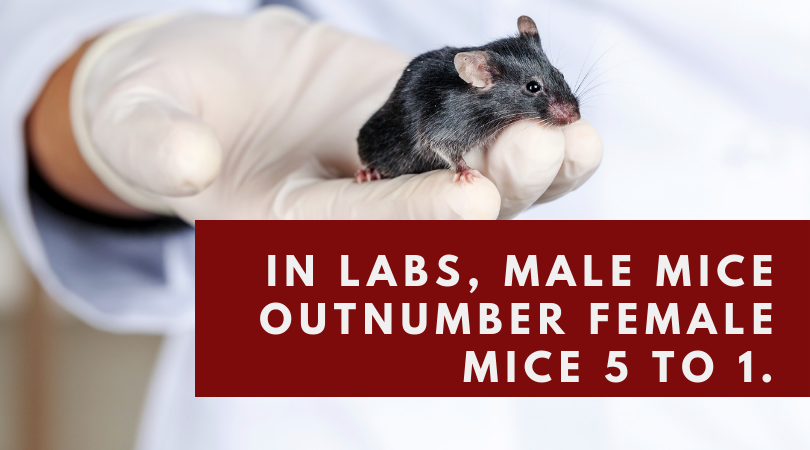Gender: The Hidden Variable in Animal Research
Posted on by Eugene Marino, Marketing Manager
Every scientist that has conducted experimental research with animal subjects knows that an essential part of any experiment is determining which variables have the potential to affect the outcome. Ideally the variables not being tested are known and controlled, but in some cases unknown variables have caused skewed and unexpected results.
One of the variables that continues to pop up as an influencing factor in research is gender.
 For instance, a study in the 1970s found that the outcomes of IQ tests varied depending on whether the person administering the test was a man or a woman, and many other studies have shown varying outcomes depending on the gender of the clinician.
For instance, a study in the 1970s found that the outcomes of IQ tests varied depending on whether the person administering the test was a man or a woman, and many other studies have shown varying outcomes depending on the gender of the clinician.
Is Your Gender Affecting Your Research?
Several studies have found that mice respond differently in clinical experiments depending on the gender of the clinicians working with them. In one study, mice responded to an antidepressant only when it was administered by men; when the same drug was administered by a female clinician, it was ineffective.
In another study, mice were showing better reactions to a pain medication when it was administered by men, and it was discovered that the mice were experiencing stress when handled by male clinicians, and that stress was reducing their pain responses.
Some scientists question whether gender alone can account for differences in research results, and there is speculation that other factors, including whether the clinician is experiencing stress while working with his or her subjects, are also at play.
Experts say that at the very least, researchers should make a note of the gender of all the clinicians involved in the experiment, to determine whether gender is a factor in results and to enable other labs to replicate their results.
Male vs. Female Lab Mice
Interestingly, the issue of clinicians’ gender may be exacerbated by the gender of the animals themselves. Researchers overwhelmingly use male mice in their work, and those mice have a gender-specific reaction to other male animals.
Male mice react with fear and stress to any other male animal, including humans. In one study where mice showed extreme stress when being handled by male clinicians, the stress response was present even when a T-shirt worn by a man was left in the room with the animals, with no male human actually present.
Another gender issue: In addition to their reaction to the gender of their handlers, there are significant differences in the physiological functioning of male and female mice, so research done on male animals may not be applicable to females.
The issue is so significant that in 2016, the National Institutes of Health began encouraging researchers to factor gender into their experiments in both vertebrate animal and human studies, and said it would require “strong justification from the scientific literature, preliminary data, or other relevant considerations” for grant applications proposing to study only one sex.
According to Janine Clayton, director of the NIH's Office of Research on Women’s Health, the policy reflects an “increasing understanding in the scientific world that males and females react differently to treatments, to medications, and show diseases in different ways."